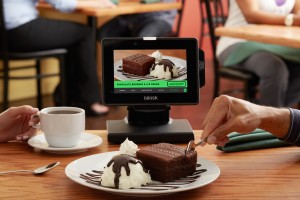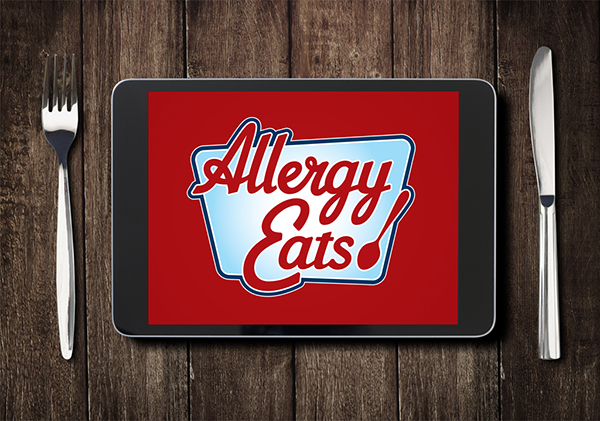Tableside Tablets in Restaurants – Friend or Foe?

Last month, Applebee’s joined Chili’s and a few other dining establishments (including tests at Red Robin, Uno’s, and more) in announcing that they would be rolling out a program to have tablet computers made by Ziosk placed on every table in their restaurants. The expectation is that diners will use these tablets to pay their bills, order additional menu items, and even play video games. Yet another step in the trend toward greater automation in our lives.
My first reaction to these tablets is mixed. I’m a tech geek. I love technology. I use the automated checkout lanes at the grocery store no matter how many items I have, no matter how long the wait, no matter how many times the machines fail as I’m using them (very often!), and despite having to bag the items myself. I loved ATMs… and then I was able to pay bills online… and now I can deposit checks via my phone! I’m in my glory! OK, enough embarrassing myself – you get the point. But yes, I am definitely looking forward to being able to pay the restaurant bill as soon as my dining party is done, rather than looking all over for the server who suddenly seems to have disappeared. I will be excited to order dessert for my wife and myself (neither of whom have food allergies) when we’re ready rather than when someone approaches us with menus. And punching in a drink refill request when I’m down to the ice? Nice!
On the flip side, when I go out to eat, I want and expect the experience to be a social one. That’s a huge part of what makes going out to eat special. I want to talk with my wife. I want to talk with my kids. I don’t like cell phones, texts, or Facebook at the table. I fully understand the need to “amuse” the smallest of children when dining out, and I begrudge no one their own choice as to whether or not to hand their children a videogame or a tablet to watch cartoons (yes, been there done that), but certainly when kids are older than 6 or so, my personal belief is they can sit and converse like anyone else. But put the temptation of a touch screen, game playing toy… I mean tablet… right on the table in front of my kids and the “conversation” will turn into a frustrating whine-fest about why they’re not allowed to use it, likely ruining the entire dining out experience. But that’s me. Maybe I’m a dinosaur. I’ll stick to coloring pages and crayons for the kids.
Both Applebee’s and Chili’s have stated that these tablets won’t replace wait staff. To that, I can only say “We’ll see.” With all the significant business pressures on restaurants – pricing sensitivity, cost increases and fluctuations, labor retention, and competitors literally everywhere – I simply don’t believe they will be able to ignore opportunities to cut costs “just a little” by letting machines do more of the work. And then “a little” more. And then “a little” more. And wait until the next recession. That’s when the cuts may get aggressive!
From the perspective of a food allergy dad and advocate, I see both promises and pitfalls from this burgeoning trend toward automation at the table. Given my instinct to look for potential problems first, the following initially came to mind:
CONCERN #1: Although current plans for both Applebee’s and Chili’s are for initial orders to be placed with a server from printed menus, I believe having a tablet for ordering follow-on items will lead to lesser dialog with some parties. It shouldn’t, since that responsibility lies with US and not the restaurant… but I fear it will, especially among the more risk-taking demographics of teens and older adults. And that dialog is the most important means of protecting ourselves against eating something that will trigger a reaction! Further, I’m particularly concerned with these tablets being geared toward desserts (where restaurants make a very high profit margin). Filled with hidden ingredients, desserts are generally considered the most dangerous part of a food-allergic individual’s meal. A dialog has to take place!
CONCERN #2: These are TOUCH-screen tablets, so food-allergic diners may have to take into consideration what food was on the fingers of those who sat at the table before them. Clearly, to be safe, the tablet screens should be wiped down by the server after each party, but I’m no expert on tablet cleaning products and I would bet that if they are cleaned at all, it will be with just a little Windex to remove fingerprints, leaving us with a potential unseen danger.
CONCERN #3: Many restaurants, particularly chains, already have allergen menus or lists online, and there is a movement just starting toward interactive allergen menus where the user checks off their allergies and the menu “shrinks down” to show just the items that that individual can eat. I have nothing against this technology; I think it can be very beneficial in deciding BEFORE visiting a restaurant whether there will be sufficient options for the food-allergic diner and whether the individual likes the options available, but I strongly suggest this technology NOT be used at the table. Once again my fear comes down to one of reduced communication. Those that don’t like having conversations about their allergies with servers (again, primarily the higher risk demographics of teens and older adults), and even well-meaning parents who let their guard down, will be much more likely to order something from the “safe” menu without informing the restaurant of their allergies. This would dramatically increase cross-contact and ingredient substitution risk for the food-allergic diner, at no fault of the restaurant. We don’t want this. Restaurateurs don’t want this. We HAVE TO communicate!
CONCERN #4: This is just the very beginning of a long-term trend. Years from now there will be more and more “communication” with the restaurant directed through these tablets. And as the wait staff grow fewer, communication risks increase.
On the flip side, there are certainly some positive opportunities for our community from having tableside tablets as well.
POTENTIAL OPPORTUNITY #1: It would great if the technology were developed so that a food-allergic diner could type his or her allergies onto the screen, thereby sending a direct message to the manager and kitchen staff. I assume automated tickets will be printed out in the kitchen when individuals place orders using the tablet, so perhaps food allergies could be indicated in bright letters at the top of the order ticket. This again, however, would not replace direct communication with the server, but it would be a nice “double check.” Ever see the order tickets at Disney? Allergies indicated right there in big, colorful letters.
POTENTIAL OPPORTUNITY #2: Perhaps the presence of these tablets would make easier the ability to communicate the orders of multiple food-allergic individuals in a party as well. I have 3 food-allergic children and I have seen MANY a server look frazzled as we try to share the different allergies of each child and what he or she would like to order (thankfully, we usually deal with great wait staff at allergy-friendly restaurants who generally get it right). This might be a valuable means of secondary communication or even confirmation BACK to the table. Ooh, I’d like that – knowing that the kitchen has gotten the message correctly. That said, I have no idea if Ziosk is adding the capability for communications from the kitchen to the table, but once these tablets are in place, the functionality will certainly expand.
POTENTIAL OPPORTUNITY #3: This may be the biggie and may negate some of my concerns. If the tablets were developed such that food-allergic individuals could type in their allergies OR with a personalized menu option for those who indicate special dining needs (listed in the Concerns above), then a smart restaurant could use this to proactively engage the party about their food allergies. The potential negative could be turned into a positive! If a few diners get upset because they didn’t want their allergies known to the party, I would say “too bad” as I believe the restaurant has the right to know how to avoid a catastrophic event in their restaurant. And of course the diner would “inadvertently benefit” from the situation being handled correctly.
I do wonder if the lines between allergies, sensitivities, and preferences could get blurred, since I doubt that if tablets had allergy functionality incorporated in them they would ask which category someone’s dietary preference fell within – allergy, sensitivity, or just preference. This theoretically could lead to greater confusion than we already see when those without a true allergy claim to have one in a restaurant (to avoid a certain food), only to change their mind when the waiter tells them they can’t have that decadent dessert because of their “allergy.” This common scenario adds skepticism to wait staff and other restaurant personnel about whether or not food allergies are real and serious. Further, if items are ordered off a gluten-free menu, will the kitchen assume it’s for those looking to avoid gluten for non-medically necessary reasons or will they take all the precautions necessary to serve someone with celiac disease or gluten sensitivity?
The bottom line is that a new trend is coming. This will be our new reality! Let’s prepare ourselves and think about what extra precautions should be taken. And let’s communicate our thoughts and concerns with the restaurant community and the vendors selling these products to hopefully turn tableside tablets into a positive opportunity for all! If our concerns are addressed, I think this can be a win-win-win for our community, the restaurant, and the tablet vendor.
Now about my kids wanting to play those games…
So what do you think? Am I on target or am I over-thinking? Are there other risks that come to your mind? How about benefits I haven’t thought of? We’d like your opinions so please share your comments in the Reply box below.
And please remember to take a moment to rate any of your recent restaurant experiences on our core site at www.allergyeats.com (or our free smartphone app). Rating a restaurant only takes a minute, but each one makes AllergyEats a more valuable tool for our entire food allergy and intolerance community. Please help us keep the momentum going!


Comments